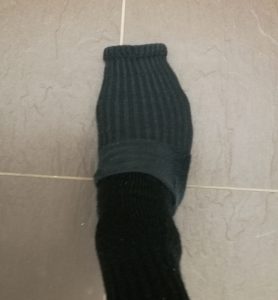What clothing happens to be considered formal is an equilibrium of a coordination game: if most others think that a given clothing item is formal, then a person who wants to be seen as formally dressed is better off choosing that garment. If enough people who aim to dress formally choose certain clothing items, then those garments will be interpreted as formal. Different cultures and eras have considered different clothes formal, e.g. tights for men were formal in Europe during Napoleonic times, but are not now.
Current formal clothing is a bad equilibrium because suits and shirts are difficult to clean, labour-intensive to iron or press, and restrict movement. A better equilibrium would be to interpret as formal some garments that are comfortable, environmentally friendly, easy to care for and cheap. It is unfortunately difficult to change equilibria in a society-wide coordination game, because a majority of people would have to change their beliefs in a short time.
The reason why suits are seen as formal is historical: these were fashionable at the height of the British Empire, which was the richest and the most powerful country in the 19th century, thus a trendsetter in the first era of globalisation. British fashion was copied in North America and Europe, spreading to the colonies from there. Labour-intensive clothes were a way for Victorian nobility to signal wealth, because only the rich could afford to hire enough servants to make and care for their clothes. In many cultures, wearing impractical clothes (toga, long dress restricting leg movemen) has been a way to signal that one does not have to work. Similar signals of leisure were pale skin (because most work was outdoors), soft clean hands (because most work was manual and dirty), straight posture (because work often involved stooping). More extreme signals of leisure were physical changes that made most jobs of that era and region difficult or impossible: women’s foot-binding in East Asia, mandarins’ long fingernails in China.
Contrary to pale skin demonstrating leisure in Victorian Britain, in modern developed countries, a suntan is a signal of wealth, because most work is indoors and most trips to tropical places or simply outdoors are costly and time-consuming vacations. A similar reversal of the meaning of a signal is that a fat belly showed wealth when food was scarce, but in modern developed countries with an obesity epidemic, developing an athletic physique takes time and effort, so being fat is statistical evidence of poverty.
Signals of wealth have always invited cheaper imitations. For example, solariums provide suntanning cheaper than travel to the tropics. Slimness can be faked with liposuction, a corset or less drastically with a tailored waist and vertical stripes that are closer together or narrower at the waist area. The appearance of broad shoulders is achievable by wearing a suit jacket with padded shoulders.
One reason for why a business suit looks the way it does is to make the man wearing it appear taller, slimmer in the waist, and broader-shouldered, thus more masculine and attractive. The V-shape formed by the lapels uses the well-known visual perception error that an object at the open end of a V looks larger than an identical object at the tip of the V. The front of a suit jacket thus creates the appearance of a slim-bellied, muscular man. If the wearer’s belly allows, then a suit jacket usually also has a tailored waist, which further visually narrows the middle of the body. The vertical lines created by the tie and the creases of the pants make the wearer look taller and slimmer, which is often accentuated by vertical stripes on the suit. It is very rare to see a suit with horizontal stripes.
The visual illusion of attractiveness that a suit creates provides a extra incentive to stay in the equilibrium in which suits are considered formal clothing. To ease the transition to a new equilibrium in which the clothes perceived as formal are more practical, the new formal clothes should improve the wearer’s looks even more than a suit. This is not difficult, because many garments may have V-shaped patterns printed on the upper body, vertical stripes on the lower, have a tailored waist and shoulder pads. The patterns and cut may be designed based on psychology research to maximise the athletic appearance of the wearer. Anything achieved with a suit may be replicated and further optical enhancements added, for example printed outlines of muscles and puffed upper sleeves.
